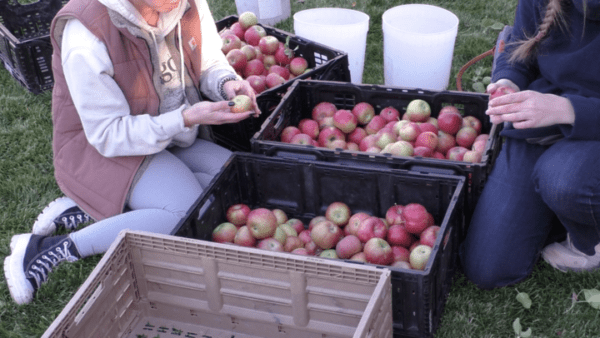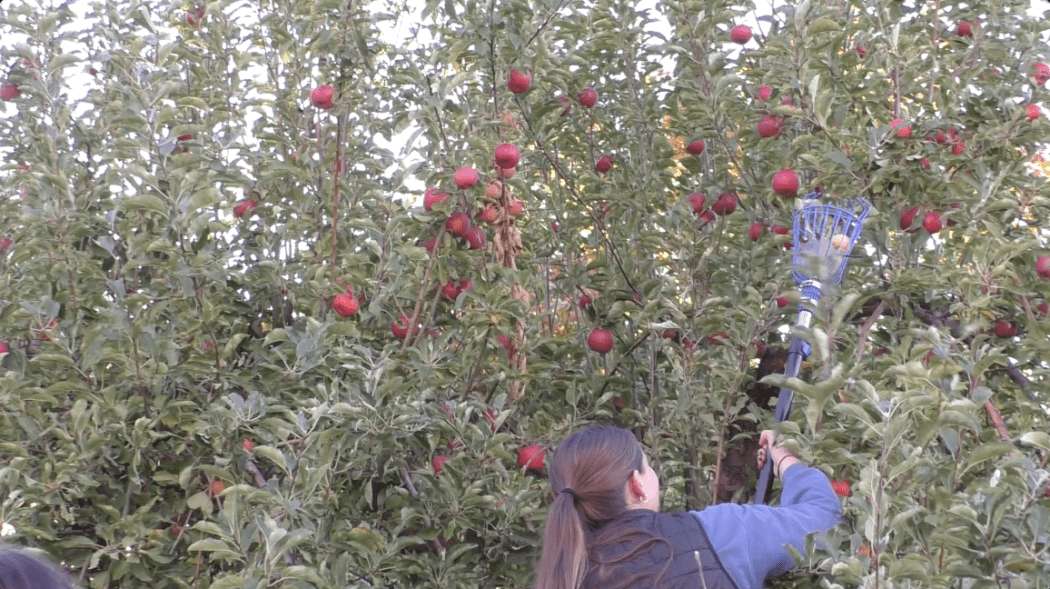USU Harvest Rescue promotes food security, sustainability through local harvesting
Every year from July to October, groups of sustainability and community-oriented volunteers gather together to take part in a local harvest rescue aimed at reducing food waste and bolstering food access.
The USU Harvest Rescue program is located under the Christensen Office of Social Action and Sustainability, a subgroup of the university that promotes sustainability and service among students.
Kate Anderson is the student lead of the USU Harvest Rescue.
“Our main goal is to minimize food waste and increase food security,” Anderson said. “We harvest from local community members — anyone who has excess produce from their trees or gardens — and we get volunteers to go harvest.”
The harvest rescue group collects produce that may have otherwise been wasted, ensuring the food is utilized to its fullest potential before being discarded.
“Sometimes people are just not physically able to harvest themselves, and so we are able to provide that help to them,” Anderson said. “People are really grateful that their fruit is not going to waste.”
Students, locals and tree and garden owners can aid in rescuing excess produce by signing up to volunteer or by registering their produce plants to come and be harvested by the group.
“We’ve harvested 13,000 pounds of produce this year,” Anderson said. “It is crazy to think that is all produce that could have gone to waste.”
Once harvested, the fresh produce is donated back to the community where locals can access it free of charge.
“All of our harvest is donated to food pantries such as SNAC on campus or the Cache Community Food Pantry,” Anderson said. “Sometimes we work with Families Feeding Families, Porch Pantry or Loaves and Fishes.”
The rescue group also works with USU Extension to turn lower quality produce into fruit leather or applesauce.

This process of harvesting and donating excess from local trees and gardens is known as gleaning: a way to provide communities and low-income individuals with fresh produce that they may otherwise have not had access to.
According to the U. S. Environmental Protection Agency, over one third of food produced in the U.S goes to waste and makes up roughly 24% of landfills.
“People waste billions of pounds of food per year, and these can account for billions of meals,” Anderson said. “One in eight people in Utah are facing food insecurity.”
Preventing and reducing food waste through processes like gleaning can help increase food security while making fresh produce available to communities in need.
“It’s really rewarding to know that I’m able to see the work all the way from start to finish and to see the impact it has, from the community members all the way to the people who receive the produce,” Anderson said.
A large portion of the produce collected by the group is distributed to the USU food pantry known as SNAC.
“Our basic mission is to make sure that students have an adequate amount of food,” said Jonathan Walters, one of the program coordinators at SNAC.
SNAC works with the group to ensure students have access to a variety of nutritious and diverse foods, including fresh produce.
Walters said there are two main categories of food insecurity that SNAC is concerned with on campus: low food security and very low food security.
“Low food security is where students may have enough food to eat, but it’s not nutritionally diverse,” Walters said.
Low food security could look like a lack of fruits and vegetables in a diet mainly composed of prepackaged foods.
“Then there’s very low food security, which is where students don’t have the nutritional variety they need, and then they also are skipping meals or rationing food because they don’t have enough food,” Walters said.
SNAC aims to address these categories of food insecurity by providing students with fresh fruit and vegetables for free.
SNAC composts lower quality produce that can’t be distributed to students so it can be transported to the USU Student Organic Farm, a student-run farm near campus.
“Students really like the fresh produce,” Walters said. “Having that produce available to students and making sure that they have it is definitely a success.”
You must be logged in to post a comment.


There are no comments
Add yours